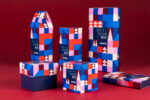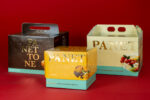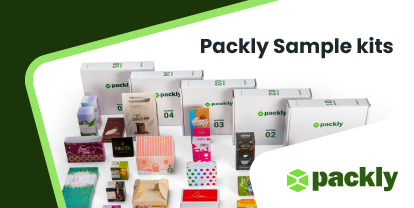The brand is one of the most important assets for a company. One of the best-known definitions of brand is the one given by Philip Kotler, who defines “brand” as a combination of name, term, sign or symbol used to identify the products or services of a seller and to differentiate them from their competitors.
From this definition it’s easy to understand how close the relationship between packaging and brand is. Here are 4 rules to design a packaging that is capable of communicating the brand effectively:
Facilitate brand recognition
It is crucial to help the customer (or potential customer) recognize the brand immediately. To achieve this goal, one of the best allies is – undoubtedly – color choice. The packaging colors must conform to the brand colors to make the brand and packaging recognizable at first glance, quickly and easily. In a previous post, we noted that 62% of consumers recognize a brand by its colors in just 3 seconds.
Differentiate yourself from the competition
The effort of a brand to differentiate itself must be reflected in its packaging choices, especially if the company aims at standing out for the perceived high quality and at convincing consumers to pay a higher price (premium price) to buy a product.
Seth Godin in his blog writes about the packaging of Madecasse, an African chocolate manufacturer. Analyzing its packaging choices, he suggests changing the packaging to better communicate the distinctive values of the brand, focusing on the true uniqueness of the company compared to its competitors: the fact that they offer the only chocolate made in Africa by Africans, and the attention to fair trade and quality of the product. To effectively differentiate itself from the competition, packaging must communicate the true distinctive elements of the brand.
Communicate emotions
A brand is not made by logo, symbols and colors alone. A brand generates emotions, involves, stimulates and surprises. The packaging must successfully represent the brand identity and convey the brand values to get in touch with the public. 80% of purchasing decisions, according to Kevin Roberts (CEO of the well-known creative agency Saatchi & Saatchi), are made based on emotions and unconscious motivations. If a company manages to effectively communicate the brand values to its target audience, it will emotionally engage customers, empathize with them and increase its chances to complete the sales process.
Trigger packaging virality
According to an article published on hubspot.com, 40% of those who buy a product are inclined to share pictures of the packaging on social networks if they find it attractive. In this way, product boxes can become “viral”, migrating from offline to online channels, and spreading to digital media.
Furthermore, people increasingly tend to ignore online advertising and to trust the advice of friends and people they know. The picture of a packaging shared by a happy customer is a great advertising medium and, if shared by other users, it will increase the online visibility of the brand. If the image is viewed by users connected to each other on the basis of friendship, kinship or acquaintance, they will be more inclined to trust the judgment on the quality of a product.
Conclusions
For companies that invest abundant resources in the creation and development of a brand, packaging represents a tool to boost the brand’s popularity and recognition and establish an emotional relationship with the target audience. Designing a packaging taking into account the rules presented in this post can help you achieve your objectives of brand communication and visibility.













